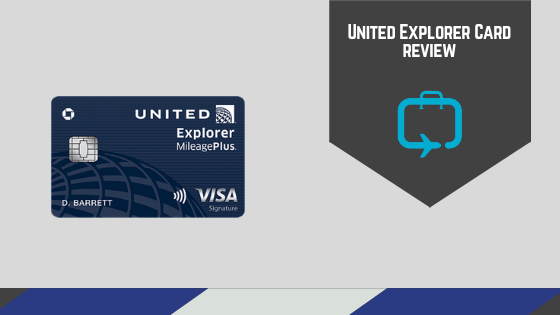There really aren’t many reasons for me to get a co-branded airline card right now. Rewarding loyalty in a time of consistent program devaluations is an odd way to navigate the points and miles world. Yet, here I am, discussing the United Explorer Card for which I was just approved.
Like many airline credit cards, it serves limited purposes. Beyond the sign-on bonus acquisition, there really is no point in continuing to put spend on the card. In the pantheon of travel credit cards, the bonus category multiples are impressively fruitless, even for purchases on United metal. The card offers 2x points on restaurants and hotel stays, which is actually on par for moderately priced travel cards. However, the inflexible nature of MileagePlus points dictates that users are better served by complimentary bank cards like the Chase Sapphire Preferred or Reserve, which allow cardholders to transfer those points to United if they see fit. Additionally, the Explorer cards also rewards spending at the 2x rate on United purchases. This, again, is in line with its peers, but remains one of my biggest gripes with co-branded airline cards- earning 2x miles on flight purchases is simply not enough to make me consolidate my travel spending on these cards.
The Amex Platinum rewards with 5x points on direct flight purchases. The Chase Sapphire Preferred and Reserve at 2x and 3x respectively. Why should I, as a casual traveler, move my spending from one of these cards which offer more versatile redemption options, to a co-branded card? As a loyalty free agent, there really isn’t any.
I’ll churn through the spending required to get what is a fairly generous sign-on bonus for a $95 card (the annual fee is waived for the first year). Currently, new cardholders can earn 40,000 miles if they make $2000 worth of purchases in the first three months, with the option to earn another 20,000 miles if they churn through $8000 worth of spending in the first 6 months total. I still have not decided if I’ll consolidate all spending on the card for half the year for an extra 20,000 points.
Despite my misgivings about the lack of uplift in the spending categories, there are a couple stand out features for the card. Cardholders get a $100 credit every four years for a Global Entry application, which, if you don’t have it already, essentially pays for the card for the first two years. As is industry standard for bag charging carriers, the card offers a free checked bag, a $30 value per bag, for cardholders and a companion on the same itinerary. Additionally, two one-time-use United Club passes are deposited into the cardholder’s account annually. I received mine a mere fortnight after my application went through. In those lounges, you’ll find enough free drinks to muster the courage to walk through the airport terminal with the masses. United is changing its policy for United Club access starting November 1, 2019. Currently, as long as you have a United Club pass, regardless of the airline your flying that particular day, you can get access. After November 1st, you’ll have to be flying on a United or Star Alliance partner itinerary to use the lounge passes.
Other benefits include priority boarding, an expanded award chart, and 25% cashback on in-flight food and beverage purchases. Cardholders also gain access to Chase’s Luxury Hotels and Resorts collection, which, along with Amex’s Fine Hotels and Resorts, is one of my favorite hotel booking engines.
Ultimately, as airline cards go, United’s Explorer card is perfectly adequate. If you travel on United frequently, it’s low annual fee will be paid off with bag fees alone. If your loyalty is tenuous, it’s fine for a bonus play. A year from now, I’ll evaluate my future travel options, knowing I may very well ditch this card.
The information herein should not be considered prescriptive financial advice. Travel Fanboy receives no commission or compensation from any links on this site. The opinions expressed are the author’s alone.
For information on how the churn and burn process can impact your credit score: Churn and Burn Credit Score Guide
Insipid Explorer
-
Sign-on Bonus
-
Spending Bonus
-
Flexibility
-
Relative Value
Summary
$95 annual fee
40k miles (+20k additional currently)
2x miles on United purchases, restaurants, and hotels
2 annual United Club passes
Free checked bag for the cardholder
Global Entry fee credit











Add comment